Wonderful Whitby UK
History of Whitby, UK
Whitby, UK has a very varied and interesting past. Little is known about the town, before the construction of the forerunner of Whitby Abbey, which was a wooden church structure, built on the top of the East Cliff in AD 657. In the Roman period there was a lighthouse, probably situated at the same site, which gave rise to the Saxon name of Streonshalh (lighhouse bay). There could possibly have been a Roman settlement, but the only indication of such, is a couple of coins found here, and the close proximity of the Roman Roads.
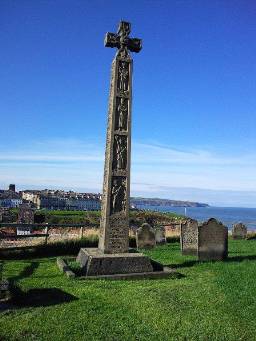
Caedmon's Cross Whitby, UK
St. Hilda founded the Whitby Abbey in AD 657, and lived there until her death in AD 680. She was a remarkable woman, very knowledgeable and wise.
It was she who inspired a lowly herdsman Caedmon, to write down his dreams, he in turn became a famous poet. The Synod of Whitby, in AD 664 calculated
the date for Easter.
Legend has it that St. Hilda drove a plague of snakes off the end of the cliff, and these turned to stone. The stone like fossils called Ammonites are,
in fact, called hildoceras after St. Hilda. Many years ago, snakes heads were carved onto the ammonites and sold as souvenirs. Three ammonites
are on the plaque of the Town of Whitby.
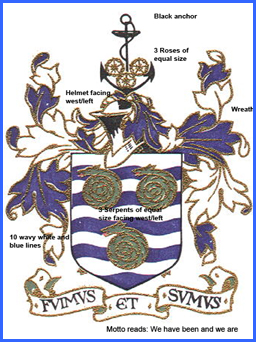
Whitby Coat of Arms
After the death of St. Hilda, the wooden monastery was replaced by a 40 cell stone building, later to be destroyed by the Danes circa AD 866. It lay derelict for a further two centuries until the present Whitby Abbey started to be built around 1078, after the land was given to Reinfrid, a Knight. It was around this time that the town obtained its modern name of Whitby (white-town).
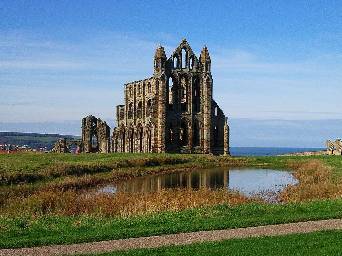
Whitby Abbey
In 1334, a gale blew down the nave walls of Whitby Abbey, again it was rebuilt. The Reformation by Henry VIII with the Dissolution of the Monastries destroyed Whitby Abbey in 1539. The building stood until 1711, but then in 1736 the south transept collapsed and the nave fell in 1794. In 1830 the central tower crumbled, and storms damaged the choir in 1839. The Abbey was shelled by the Germans on December 14th, 1914.
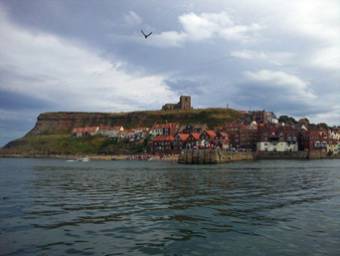
Whitby, UK from the Sea
When the present day Whitby Abbey was rebuilt in about 1078, Whitby flourished, and the population grew from just a few houses on the cliffs near the Whitby Abbey, to many buildings on both sides of the river. In 1528, King Henry VIII, granted permission for a fair in honour of St. Hilda, on August 25th and a second fair in November. Around the time of Elizabeth 1st (1558-1603), Whitby was an established fishing port, with a growing population.
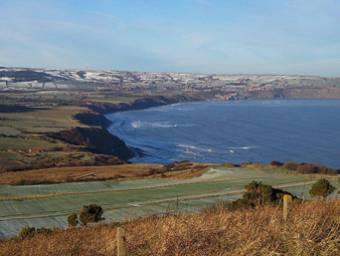
Ravenscar, the main site of Alum Mining
By the end of the 1500’s, a Thomas Chaloner of York, travelled to Italy and visited some alum works. Recognising the alum rock as being similar to the rocks near his estate in North Yorkshire, he started an alum industry here, and this broke the monopoly that Italy had in supplying England with alum, which was essential in the fixing of dyes in cloth and the curing of leather. The production of alum, in the many mines around the area further increased the commerce in Whitby, UK.
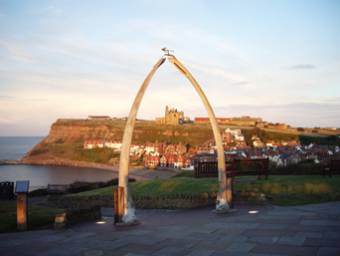
Whitby Whale Bones
Around the middle of the 18th century, there was an expansion of the port’s fishing to include whaling. Between 1753 and 1837, there were 577 whaling expeditions. The most famous of the whaling captains was Captain William Scoresby (1760-1829), who invented the crow’s nest in 1807. Over the years, this industry declined, with the number of whales caught decreasing, and by 1837 the last ship The Camden made its final whaling voyage.
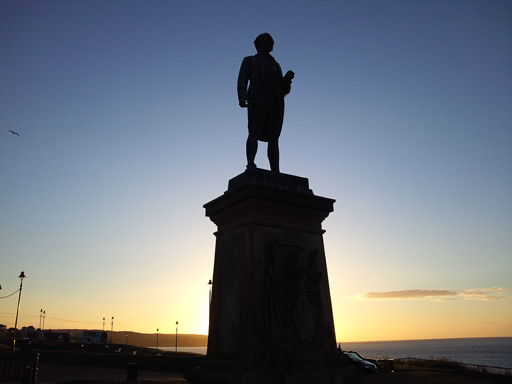
Captain Cook's Monument
Another famous son of the Town of Whitby , is Captain James Cook (1728 - 1779). Captain Cook was born in Marton, he moved to Great Ayton when he was 8 years old, where he attended the local school (now a museum). At the age of 16, he moved to Staithes to become an apprentice to a grocer. The love of the sea, however, saw him to move to Whitby after 18 months, to live with the Walker family, a local shipbuilders. After serving a three year apprenticeship, he then sailed with the merchant navy rising through the ranks.
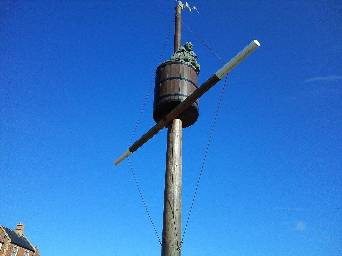
The Crow's Nest Monument, Station Square
In 1755 he joined the Royal Navy, and in 1768 he commanded HMS Endeavour, which was hired by the Royal Society to record the transit of Venus, across the sun. Captain Cook sailed to the Pacific, where the observations were to be made, and then continued to map out New Zealand and later the coastline of Australia.
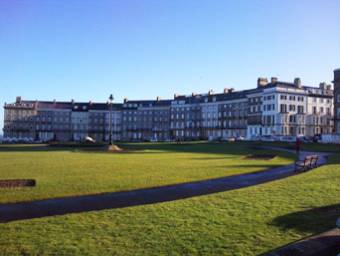
Royal Crescent, Whitby West Cliff
In 1839, George Hudson built the Whitby to Pickering Railway, which greatly increased the popularity of Whitby as a tourist destination. He was also responsible for the building of the West Cliff area with its large houses and hotels. Since the Victorian times onwards, Whitby has gone from strength to strength with regard to tourism. There are now a wide variety of guest houses, hotels, self-catering establishments and restaurants.
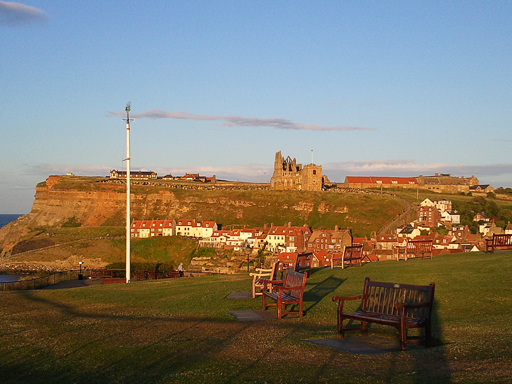
Whitby in the Evening Sun
Growth continues in Whitby, UK, with the introduction of even more tourist related properties and attractions. Television and filming, enhances the popularity of the area making Whitby one of the most desirable places to live in England.
